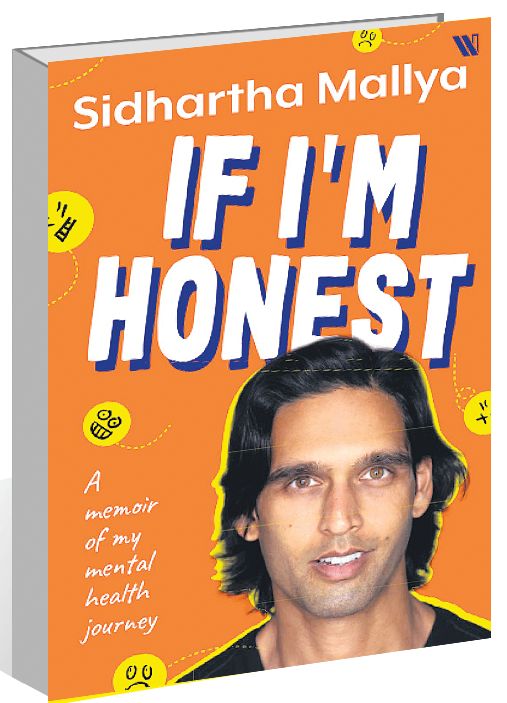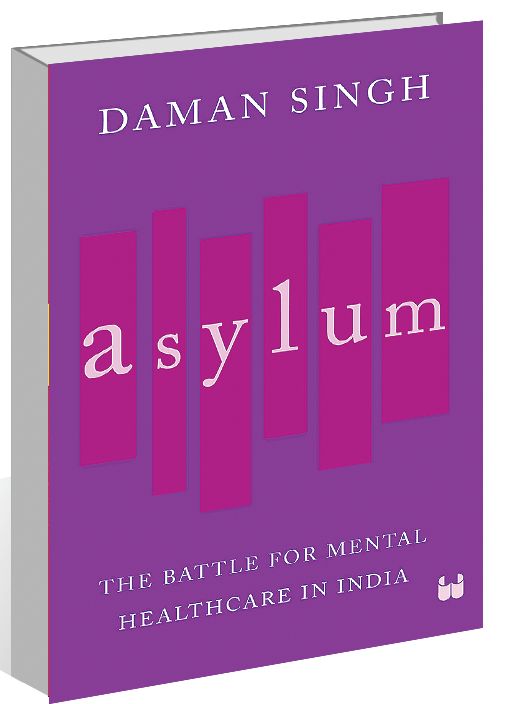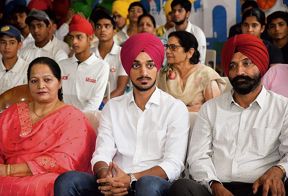Asylum: The Battle for Mental Healthcare in India by Daman Singh. Westland. Pages 184. Rs 499
Book Title: Asylum: The Battle for Mental Healthcare in India
Author: Daman Singh
Simmi Waraich
TWO new books — “Asylum: The Battle for Mental Healthcare in India” by Daman Singh and “If I’m Honest: A Memoir of my Mental Health Journey” by Sidhartha Mallya — come at a time when mental health has taken centrestage. Daman Singh’s work is packed with facts on how reforms were set in motion first by an address by a Dr McDowall in 1897 at the meeting of the Medico-Psychological Association of Great Britain and Ireland, followed by Fraser and Warden’s report (members of the Indian Hemp Society) on the abysmal “lack of scientific treatment” and “untrained superintendents” in Indian asylums in 1900.

This set off a spate of reforms; the new superintendents, called alienists, were trained in the UK. The asylums got a facelift and the Ranchi European Asylum (now the Central Institute of Psychiatry), that catered largely to British patients, was set up in 1918. The training of doctors started and that of nurses followed suit. Dr Banarsi Das, Dr Dhunjibhoy, Dr Berkeley Hill White all proceeded to unchain, unfetter, unrestrain inmates, and occupational therapy was introduced. Newer treatments, now long obsolete, like cardiazol-induced seizures, insulin coma, prolonged sleep therapy and later Cerletti and Bini’s revolutionary electroconvulsive therapy (highly effective and used even now under anaesthesia), were introduced. Dr WSJ Shaw proposed renaming lunatic asylums as mental hospitals, which came to pass in 1923.
With Independence, however, came a period of lull. The Indian Lunacy Act of 1912, which equated mental illness and mental retardation (now called intellectual disability), continued unhindered for decades till the Mental Health Act of 1987 finally came into force in 1993! Ignorance, apathy and misconceptions about mental illness may have led to the tardy implementation.
In the 1980s, a flurry of news items surfaced on the state of mental hospitals. Raghu Rai’s searing photos of Ranchi showed patients chained to beds, dogs and women eating off the same plates. The annual government allowance was a measly Rs112. There were 1,580 patients and 300 beds! With a mental health budget at 1.6 per cent of the total Health Budget (in itself one of the lowest in the world), India’s resources needed a rehaul.
There appeared news reports of 34 “non-criminal lunatics” being found in Gwalior Central Jail. In 1988, Maharashtra appointed a committee to look into the four mental hospitals, which revealed cruelty, overcrowding and many recovered patients who languished as families abandoned them. In 1992, 22 undertrials were reported at Amritsar Mental Hospital, one picked up for trespassing at 26 was now 55 years old.
A 1999 survey by the National Institute of Mental Health and Neurosciences, Bengaluru, highlighted problems, and also achievements. Based on this, proposals were sanctioned. Two fresh laws — Rights of Persons with Disability Act and the Mental Healthcare Act 2017 — were enacted.
Daman Singh does a commendable job to put all this effectively, simply, without being overly pedantic or hyperbolic. Inputs from leading professionals though would have enriched the book. For instance, there are currently only 0.75 psychiatrists and 0.3 clinical psychologists per lakh population; the latter statistic means many untrained psychologists oversee this sensitive case load.
The current mental healthcare act is far-reaching, with the right to free legal aid and setting up of state mental health authorities. It also speaks of halfway homes, long-term stay homes and much more as the responsibility of states. However, it is cut off from ground reality such as no provision for acute mental health teams, no community treatment and only the police having the authority to transport an involuntary mentally-ill person to a hospital.
It brings a western system without the manpower or resources that the developed world has. In India, families are still the main caregivers and it dilutes their role. A chapter on the pertinent issues and the way forward with comments from NGOs working in the field and leading stakeholders would have added to the book’s relevance.
The memoir by Sidhartha Mallya is a personal journey. His name conjures up images of a privileged youth living in the UK, though Sidhartha spent two years in India, too. Drinking parties, the hunt for the next Kingfisher Calendar Girl seemed to be his sole passion and he was much maligned for his lifestyle after he joined United Breweries in 2005 as a director. However, his book reveals his descent into clinical depression, his decision to seek professional help, and how he persevered along his path of self-discovery through regular meditation and working with a therapist.
A six-year-old boy living with his mother with visits from his larger-than-life father, Vijay Mallya, whom he idolised, finds that the father has another family! A family with two half-sisters, a stepmother and two step siblings. The holidays spent with his new big family are overwhelming for this boy. He returns to his house with his mother and grandmother, to an emptiness which leads him to unduly displace his angst onto his mother.
His foray into acting (his passion), regular therapy and transcendental meditation, along with quitting alcohol, transform him.
A sensitive memoir, it is cognisant of how mental health does not discriminate. It is likely to resonate with many a youngster who may be going through self-image, relationship, or existential issues which are often left unaddressed.














